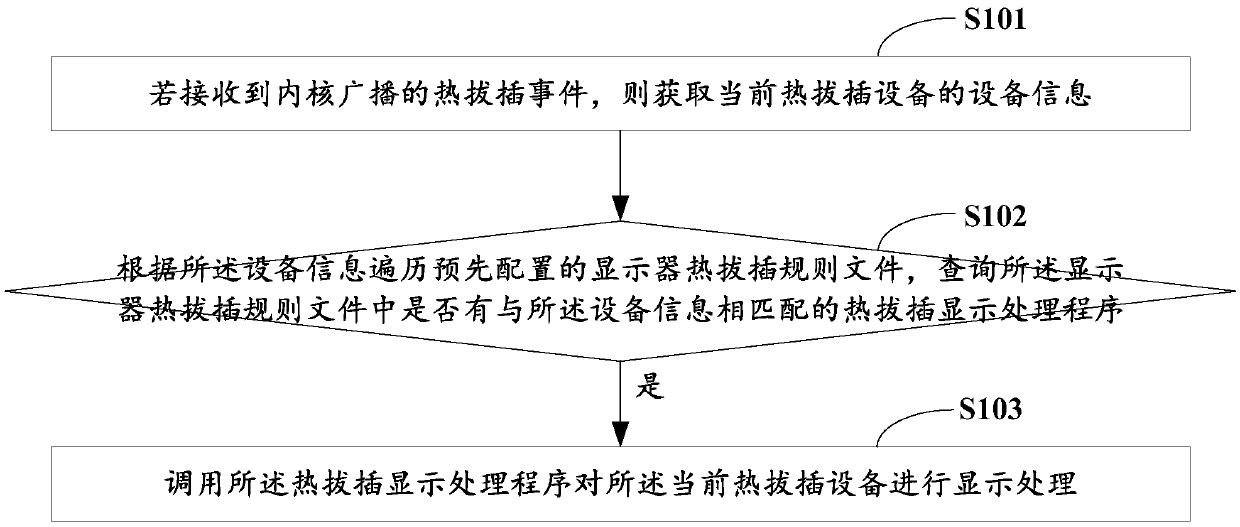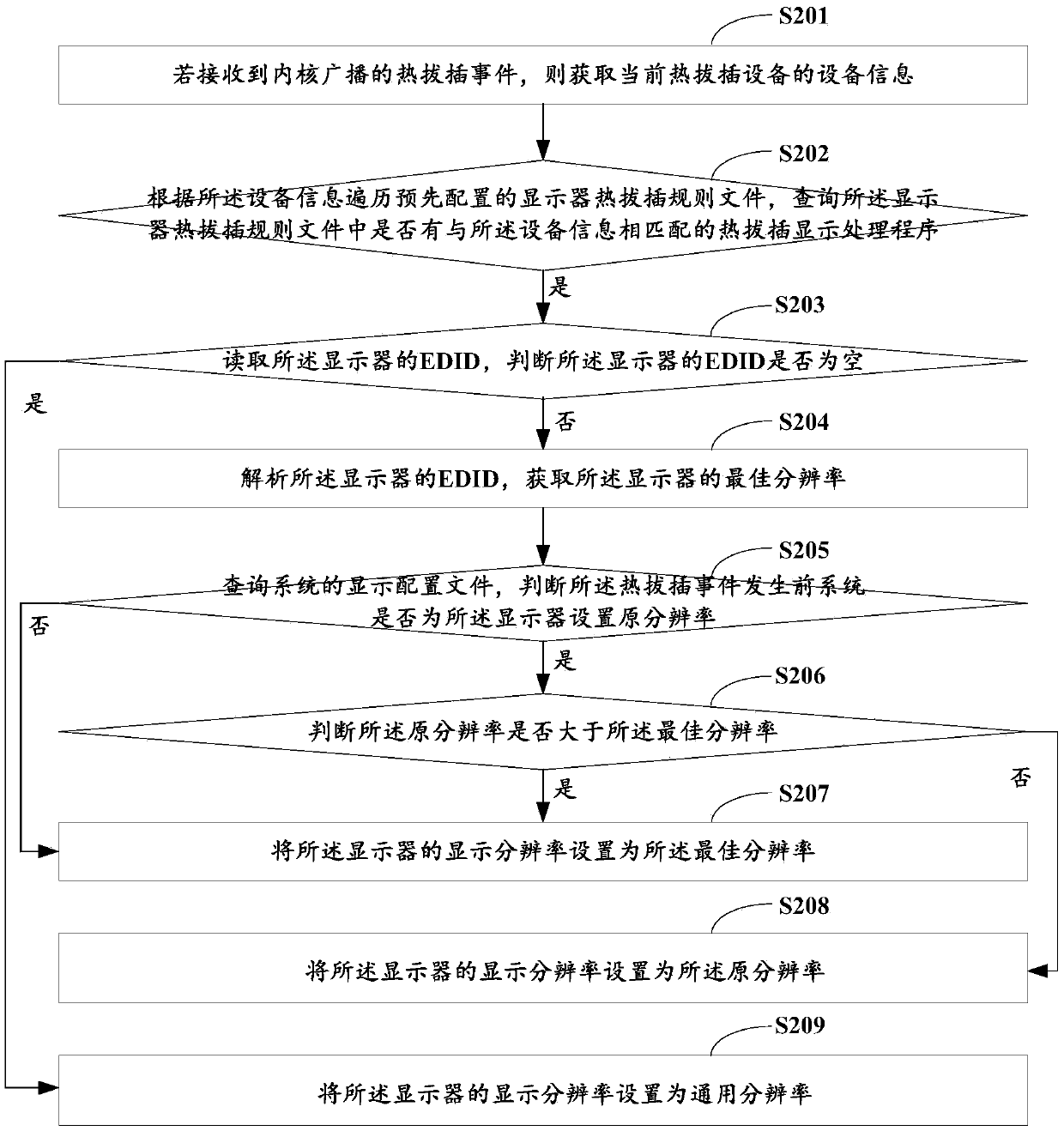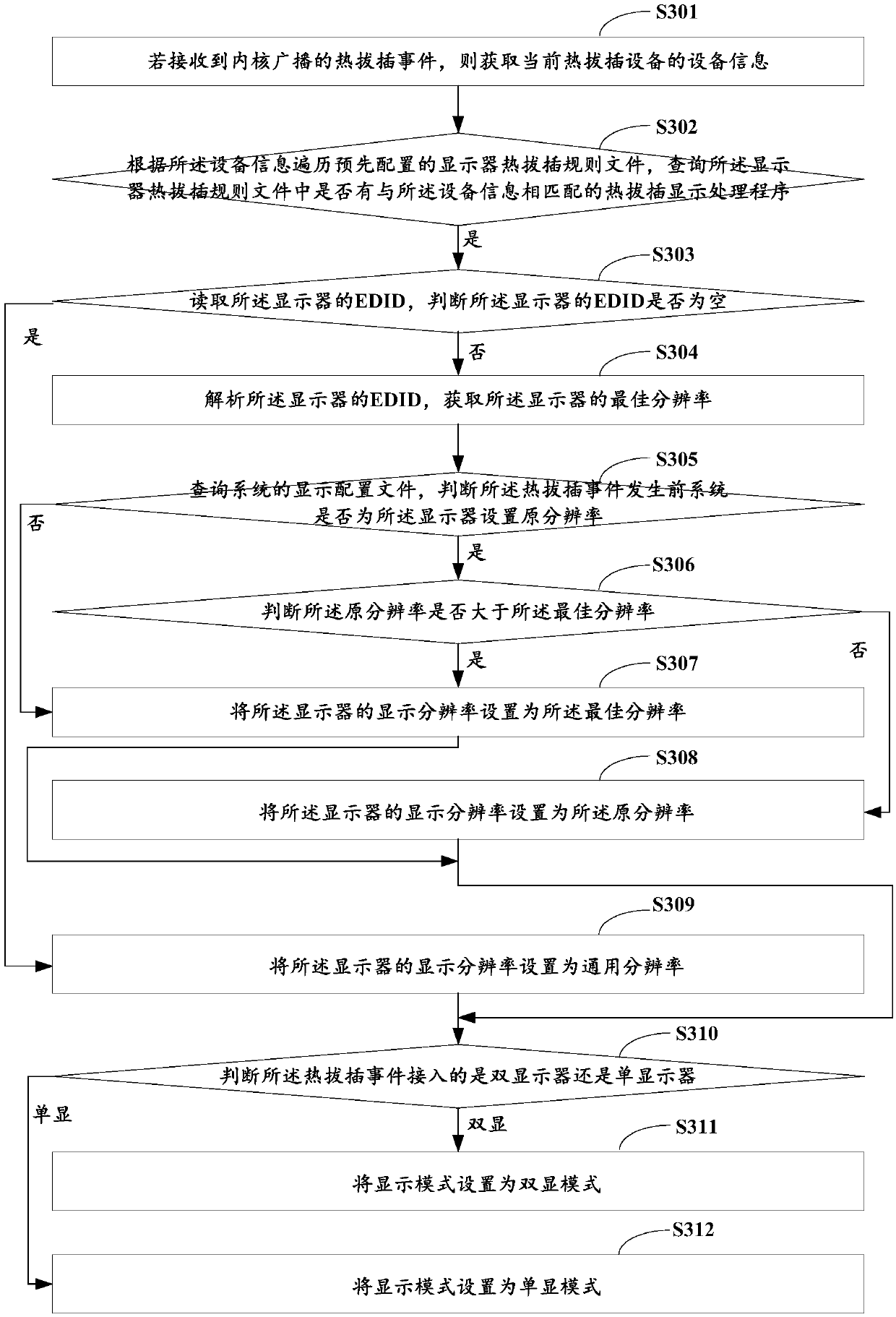Display hot plug processing method, system and device and storage medium
A display processing and processing method technology, applied in the direction of digital output to display equipment, electrical digital data processing, data processing input/output process, etc., can solve the problems of resolution loss, black screen, different resolution, etc., to avoid display abnormal effect
- Summary
- Abstract
- Description
- Claims
- Application Information
AI Technical Summary
Problems solved by technology
Method used
Image
Examples
Embodiment 1
[0024] figure 1 It is a schematic flowchart of the realization of the display hot-swap processing method provided by Embodiment 1 of the present invention, and the execution body of the method is the display hot-swap processing system / equipment. see figure 1 As shown, the display hot-swapping processing method provided in this embodiment includes the following steps:
[0025] Step S101, if a hot-plug event broadcast by the kernel is received, obtain device information of the current hot-plug device.
[0026] Preferably, in this embodiment, before step S101, it also includes:
[0027] Pre-configuring the display hot-swap rule file, the display hot-swap rule file includes at least one set of matching keys and assignment keys;
[0028] Wherein, the matching key includes the device name, the subsystem to which it belongs, event behavior and graphics driver information; the assignment key includes the specified hot-plug display processing program.
[0029] The event behavior in...
Embodiment 2
[0041] figure 2 It is a schematic flowchart of the realization of the display hot-swapping processing method provided by Embodiment 2 of the present invention, and the execution body of the method is the display hot-swapping system / equipment. see figure 2 As shown, the display hot-swapping processing method provided in this embodiment includes:
[0042] Step S201, if a hot-plug event broadcast by the kernel is received, obtain device information of the current hot-plug device.
[0043] Step S202, traverse the pre-configured display hot-swap rule file according to the device information, and query whether there is a hot-swap display processing program that matches the device information in the display hot-swap rule file; If the hot-plug display processing program matching the above-mentioned device information is used, the process goes to step S203.
[0044] It should be noted that, since the implementation manner of steps S201 to S202 in this embodiment is completely the sa...
Embodiment 3
[0057] image 3 It is a schematic flowchart of the realization of the display hot-swap processing method provided by the third embodiment of the present invention, and the execution body of the method is the display hot-swap system / equipment. see image 3 As shown, the display hot-swapping method provided in this embodiment may include the following steps:
[0058] Step S301, if a hot-plug event broadcast by the kernel is received, obtain device information of the current hot-plug device.
[0059] Step S302, traverse the pre-configured display hot-swap rule file according to the device information, and query whether there is a hot-swap display processing program that matches the device information in the display hot-swap rule file; If the hot-plug display processing program matching the above-mentioned device information is used, the process goes to step S303.
[0060] Step S303, read the EDID of the display, and judge whether the EDID of the display is empty; if the EDID o...
PUM
 Login to View More
Login to View More Abstract
Description
Claims
Application Information
 Login to View More
Login to View More - R&D
- Intellectual Property
- Life Sciences
- Materials
- Tech Scout
- Unparalleled Data Quality
- Higher Quality Content
- 60% Fewer Hallucinations
Browse by: Latest US Patents, China's latest patents, Technical Efficacy Thesaurus, Application Domain, Technology Topic, Popular Technical Reports.
© 2025 PatSnap. All rights reserved.Legal|Privacy policy|Modern Slavery Act Transparency Statement|Sitemap|About US| Contact US: help@patsnap.com



